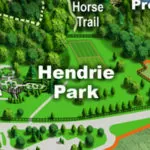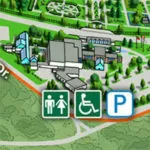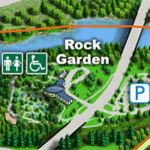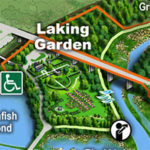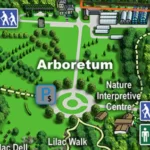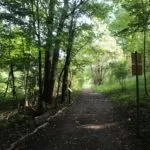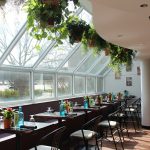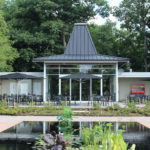| Membership | Price (+HST) |
|---|---|
| Single | $85/year |
| Single Plus | $120/year |
| Family | $130/year |
| Family Plus | $175/year |
| Contributing | $300/year |
| Supporting | $600/year |
| Sustaining | $1,000/year |
| Benefactor's Circle | $2,500/year |
| Director's Circle | $5,000/year |
| President's Circle | $10,000/year |
Controlled Burn and Prairie Management
Controlled Burns in RBG Nature Sanctuary
This spring, Royal Botanical Gardens (RBG) will be conducting controlled burns at two sites in the Cootes Paradise Nature Sanctuary to improve rare plant habitat.
Locations:
- Princess Point: 335 Longwood Rd N. Hamilton, Ontario
- North Shore Landing: (RBG Arboretum) 16 Old Guelph Rd Hamilton, Ontario
The burns will occur on a single day based on suitable weather conditions in late March – late April.
Controlled burns require specific weather conditions and accurate forecasting before an exact date can be established. A second notice will be posted on our website and on social media (Facebook, Twitter, Instagram) once the date is confirmed. Lands & Forest Consulting will be partnering with Royal Botanical Gardens to conduct the burn.
Exact 2025 date to be determined.
Tallgrass Prairie and Oak Savannah Management at RBG
Controlled burning is an important means of managing invasive species and preserving rare native plant communities, including tallgrass prairie and oak savannah. Many of Ontario’s endangered plant species are restricted to prairie and savannah habitat —less than 1% of the existing habitat remains in the Hamilton region. Several interpretive signs on this theme are displayed at Princess Point.
Fire Safety
RBG’s controlled burns take place under the supervision of prescribed burn specialists from Lands & Forests Consulting Ltd. This ensures that controlled conditions exist throughout the course of the event. The burn plan is acknowledged by Hamilton’s local fire department.
Smoke
During the controlled burn, smoke is present on site and may last on site for up to 48 hours after all fires have been extinguished. For health reasons, it is recommended that individuals with asthma avoid prolonged exposure to the smoke. In addition to this, the smoke may contain small amounts of poison ivy oil. Those individuals who are sensitive to poison ivy should avoid exposure to the smoke. If respiratory irritation occurs, please move immediately to an area with fresh air and contact a physician.
Frequently Asked Questions
For media queries or more information, please call 905-527-1158.
Where is Princess Point and what does it have to offer?
Princess Point is located on the south side of Cootes Paradise where Longwood Rd North meets Macklin St., the Princess Point Trail takes you through rare tallgrass prairie and oak savannah habitat. With newly built lookouts and trail resurfacing, this sanctuary offers visitors a chance to embrace a unique ecosystem that supports grassland birds, shorebirds, turtles, deer and much more. Throughout the summer native wildflower species like Butterfly weed (Asclepias tuberosa), Wild Bergamot (Monarda fistulosa), Black-eyed Susan (Rudbeckia hirta) and various species of sunflowers add a splash of colour that attract multiple pollinators. In late summer and early fall, native tall grasses such as Indian Grass (Sorghastrum nutans), Big Bluestem (Andropogon gerardii), and Switchgrass (Panicum virgatum) can be seen billowing in the wind. Visitors can also seek shade under the multiple oak trees that have a long-standing history in the area. A boat launch located next to the parking lot provides access for non-motorized watercrafts to Cootes Paradise marsh.
This property is located within the Cootes to Escarpment EcoPark System of which Royal Botanical Gardens is a partner, with eight other organizations. There is currently more than 1,950 hectares of permanently protected lands within the EcoPark System which are home to more than 50 species at risk. This prescribed burn is one of the many ongoing initiatives to protect, restore and connect the significant natural lands connecting Lake Ontario to the Niagara Escarpment.
What is a prescribed burn?
A prescribed burn is a controlled, purposely set, and carefully managed low temperature fire that consumes dried leaves, small twigs and grass stems. It does not harm larger trees and is a recognized, scientific method of controlling invasive species and encouraging the establishment of certain natural and planted seedlings. Conservation Halton and Hamilton Conservation Authority have also conducted prescribed burns for similar purposes, over the past several years within Hamilton.
Why has Royal Botanical Gardens been undertaking prescribed burns at Princess Point?
The burn is an important means of preserving the threatened tallgrass prairie and oak savannah community at Princess Point. Many of Ontario’s endangered plant species are restricted to grassland habitats and less than 1% of the existing habitat remains in the Hamilton region.
Oak savannahs and tallgrass prairies evolved to be fire dependent because fire disturbance helps reduce woody plant succession and invasive plant competition. If left untouched, forest succession occurs, and vegetation becomes less diverse. After burns, seed is often scattered or plants planted in the area to further increase diversity. These restoration efforts support species at risk such as the Monarch butterfly and add resiliency to a threatened ecosystem type.
Why is hard to predict the date of the burn?
Controlled burns require specific weather conditions and accurate forecasting before a precise date can be established. Once the site is dry and there has been no precipitation for some time, the humidity and wind speed/direction need to fall within specific parameters to minimize smoke impact to the surrounding area. A notice is posted on rbg.ca and on social media (Facebook, Twitter, Instagram) once a date is confirmed (typically within 3 days notice)
Who carries out the burn?
RBG’s controlled burn takes place under the supervision of prescribed burn specialists from Lands & Forests Consulting Ltd. They will ensure that controlled conditions exist throughout the course of the event. The local fire department issues a burn permit and the ward councillors from the City of Hamilton have acknowledged the burn plan.
How long will the burn take?
The burn can take anywhere from 2-5 hours but the area is closely monitored by expert staff for 48 hours after the fire has been extinguished.
How does the burn affect the animals that live in the grasses?
On the day of the burn, RBG staff survey the landscape for signs of wildlife. Anything seen (mostly snakes and frogs) are removed from the burn area. Many animals seek refuge underground – which remains cool. The burn is scheduled for early spring to avoid birds’ nesting season. After the burn, the grassland will green up quickly. Vegetation will remain short for several weeks but come July and August it will look completely different – full of grasses and wildflowers which provide essential habitat for wildlife and pollinators.
How is success measured?
Royal Botanical Garden staff trained in ecological monitoring determine the success rates of the burn. Specified plots are monitored on a yearly basis to compare the presence and abundance of native and non-native species. The end goal is a tallgrass prairie and oak savannah that maintains a variety of native plants and provides food and habitat to local wildlife and pollinators alike.

